There's a lovely calmness when foraging in September. The kids are back at school, the crowds have cleared off and the hedgerows are filled with berries, nuts and seeds – rewarding you for your patience throughout the season. Grab your basket, tubs or bags and take to the great outdoors with our guide to foraging in September.
Where to forage in September
Where not to forage? Woods, hedgerows, heathland are all promising places to start. Make sure you leave plenty for the squirrels, birds and other creatures who rely on this crop to survive the winter.
How to forage safely and responsibly
Whether you're a seasoned forager or a complete newcomer, there are some golden rules you need to be aware of before you begin. Check out our beginner's foraging guide to learn how to forage safely and responsibly throughout the year.
Beginner's Guide to Foraging, with monthly guide to what's in season
Getty
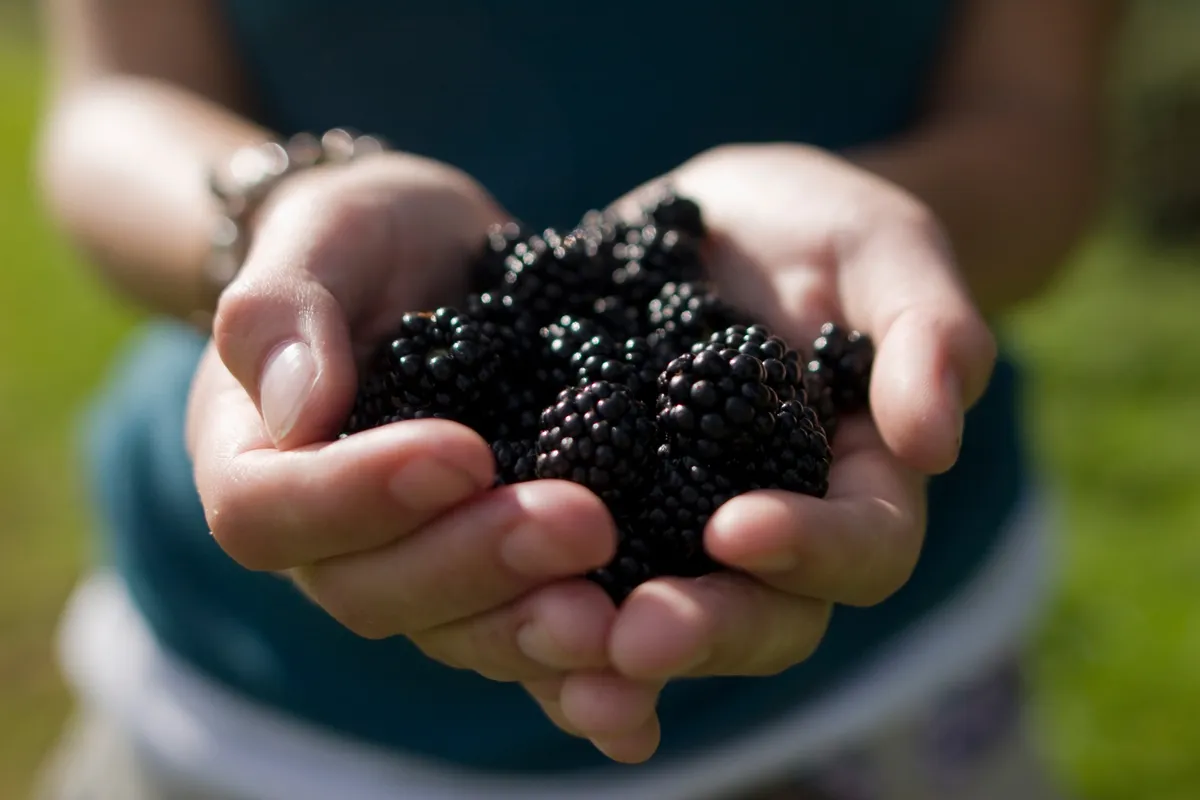
What to forage for in September
Edible berries: ID guide
Blackberries
This prickly shrub grows in woods, hedges and heaths. It is usually found in a tangled straggly clump, with prickly, toothed leaves that turn reddish green in the autumn. The berries should be a deep purple-black when picked.
- We've rounded up our favourite blackberry recipes – including new twists on old favourites – in our blackberry guide.
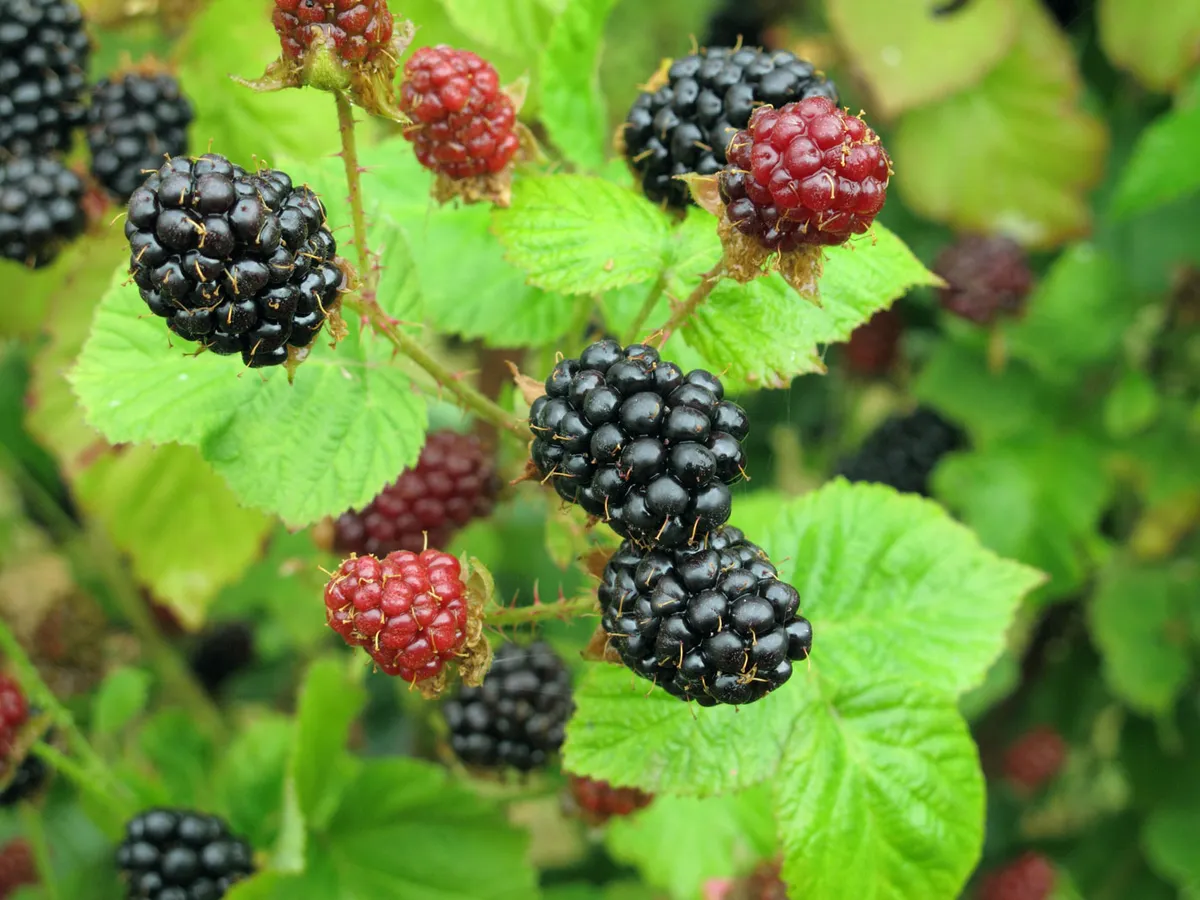
More related content:
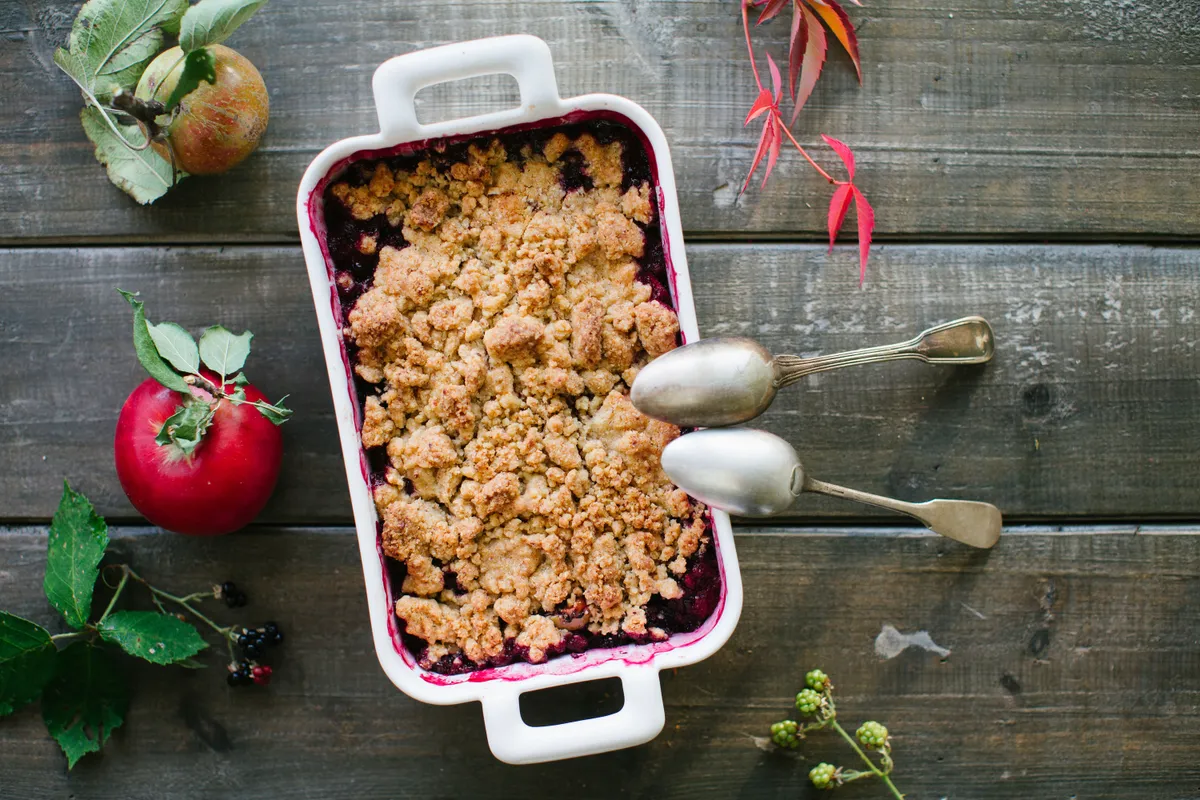
Sloes
The fruit of the Blackthorn tree, sloes are abundant in the wild in the UK. They are notoriously bitter when eaten straight from the branch, and make a fun highlight to family walks to see who can chew for the longest without making a face. The berries should be picked when ripe: a deep purple colour and easy to squash. A promising sign is seeing fallen sloes around the tree.
Sloe gin is a staple among homemade Christmas presents. If picking for this reason, you should traditionally wait until after the first frost so that the frost splits the skins and you don't have to bother pricking them. But if you'd rather get ahead, pick them in autumn and freeze the berries for the same effect.
- Try our recipe for perfect sloe gin
- Blackthorn guide: how to identify, folklore and uses
- Best foraging courses in the UK
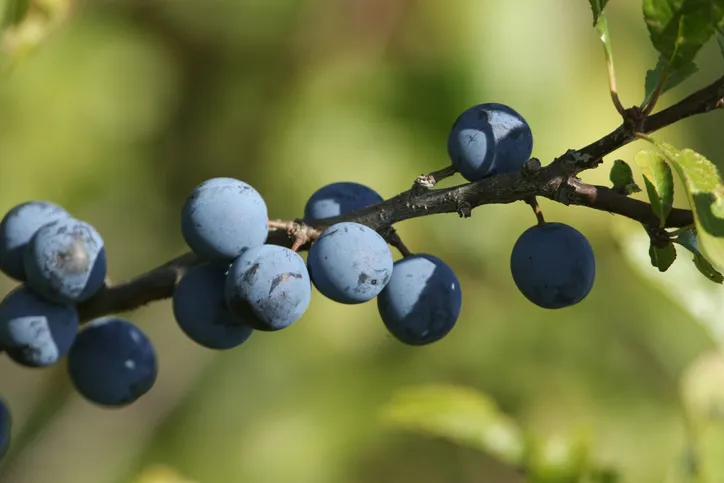
Hawthorn berries
This abundant shrub can be found in woodland, hedges, scrubland, on heaths and downs. Its leaves are a glossy green, deeply lobed and found on spiny branches. The round red berries (haws) grow in small bunches and have a gentle, apple-like taste.
They can be used to make wine or a sort of candy called hawthorn leather. This involves simmering the haws in a little water until soft and straining off the pips. You then add sugar as you would to make a jam but keep reducing the liquid until it thickens. When cool, it resembles a chewy fruity sweet.

Rosehips
Used as a replacement for citrus fruits during the Second World War, rosehips were widely collected and made into syrup for flavouring foods. Full of vitamin C, they are rich in antioxidants and can help support a healthy immune system.
Look for rosehip in hedgerows, rough grass and scrub. The bush grows up to 3m (10ft) high. The leaves grow in pairs of toothed leaflets, the flowers are pink or white, and the fruit is orange-red and oblong shaped. Watch out for thorns and be sure to carefully remove the inner seeds, still known in primary schools across the land as 'itching powder'. Once dried, you can make your own fruit teas with them for a burst of flavour in the winter months.
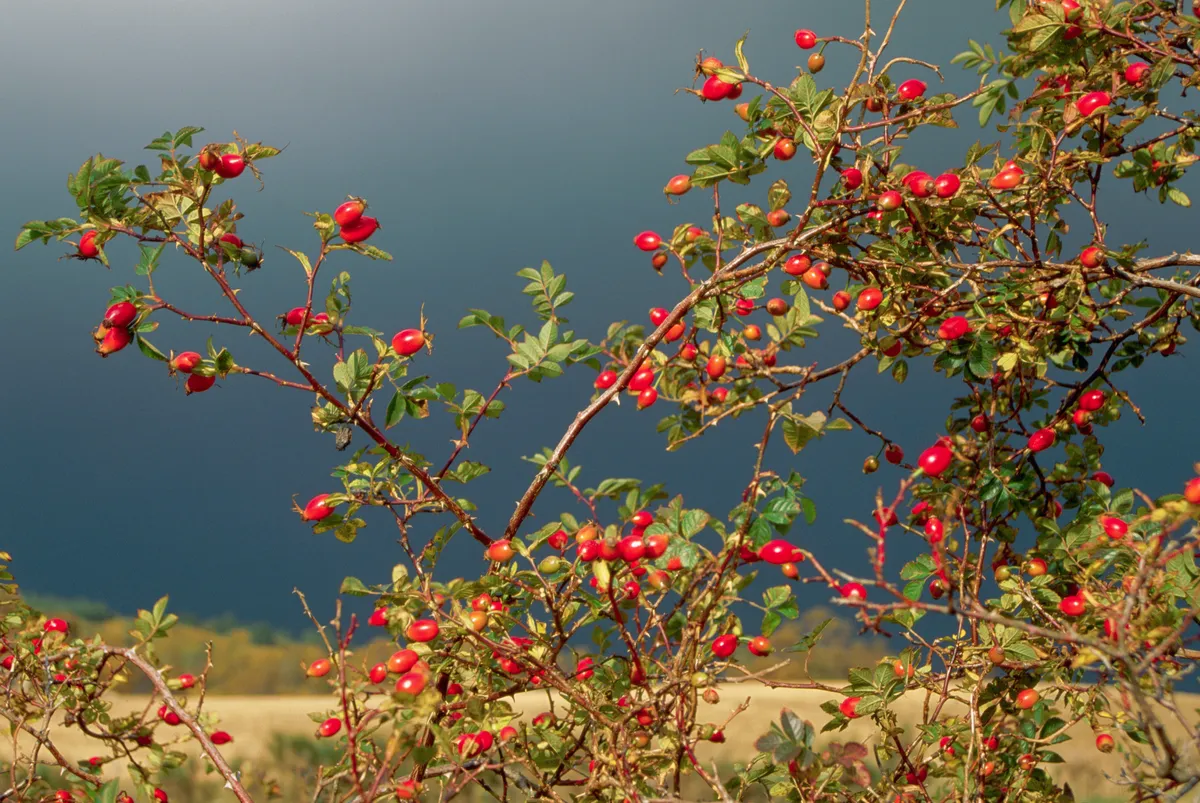
Elderberries
Widespread and easily found in woodland and hedgerows. The bark is corky, and the green slightly-toothed leaves grow in groups of five. These small, dark red-black berries grow in clusters and can be added to sweet pies, crumbles or jams.
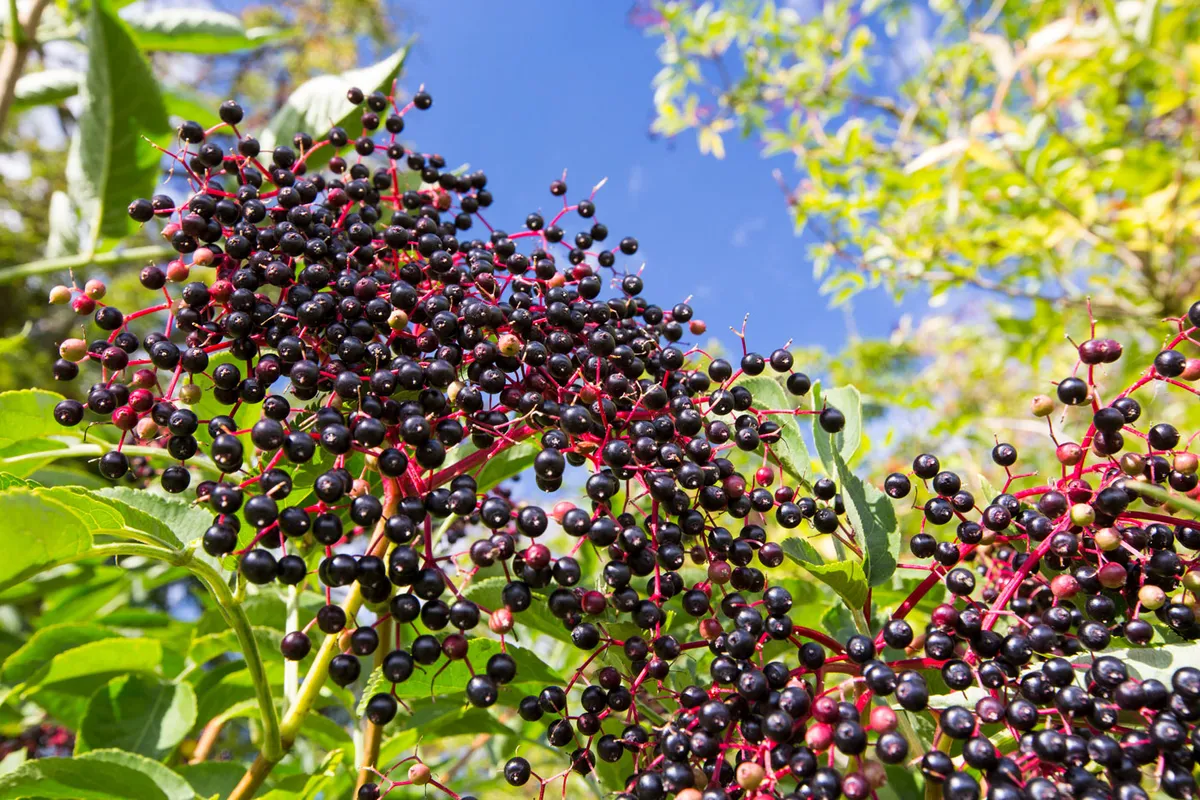
Rowan berries
Raw rowan berries are very tart and contain parasorbic acid, which is toxic, but when cooked it becomes sorbic acid, which is safe. Rowan berries can be used to make Rowan wine.
- Try out this spiced crab-apple and rowanberry leather recipe.
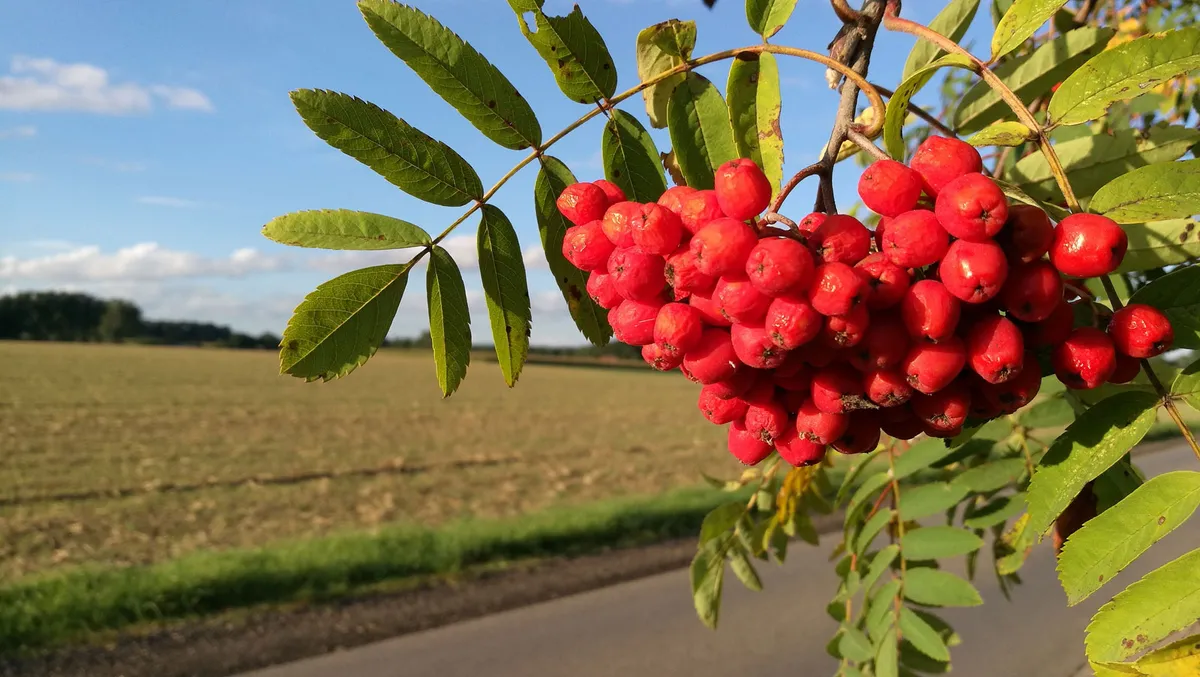
Raspberries
An easily identified plant and less prickly to handle than its bramble cousin. Raspberries are coming to an end in September, but you should still be able to get a harvest or two, especially from autumn fruiting garden escapees. It is only very slightly spiny with toothed oval shaped leaves, with a white underside. These rich red berries are formed from drupelets.
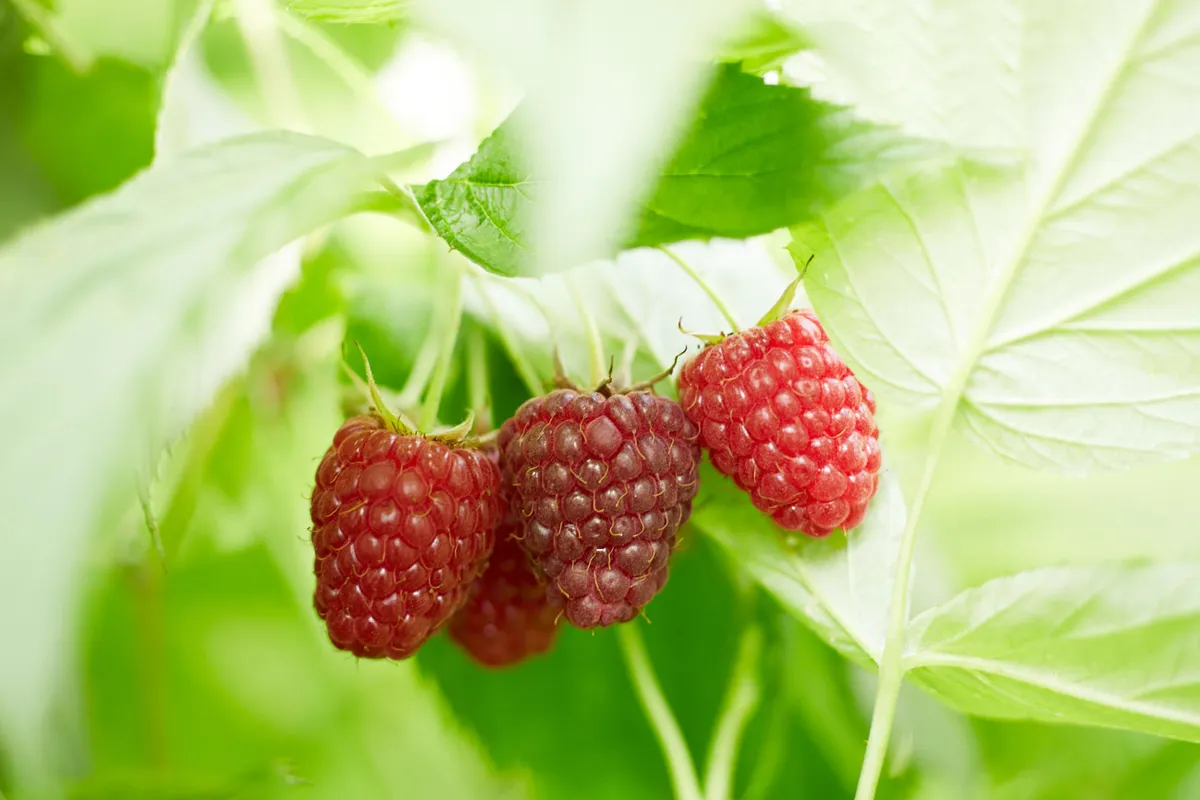
Wild strawberries
Although small and hard to find, these berries are well worth the search. They are bursting with flavour and best eaten straight from the plant. They can be found on grassy banks and in open woodland, low on the ground. The leaves are grouped in threes and are toothed and shiny.
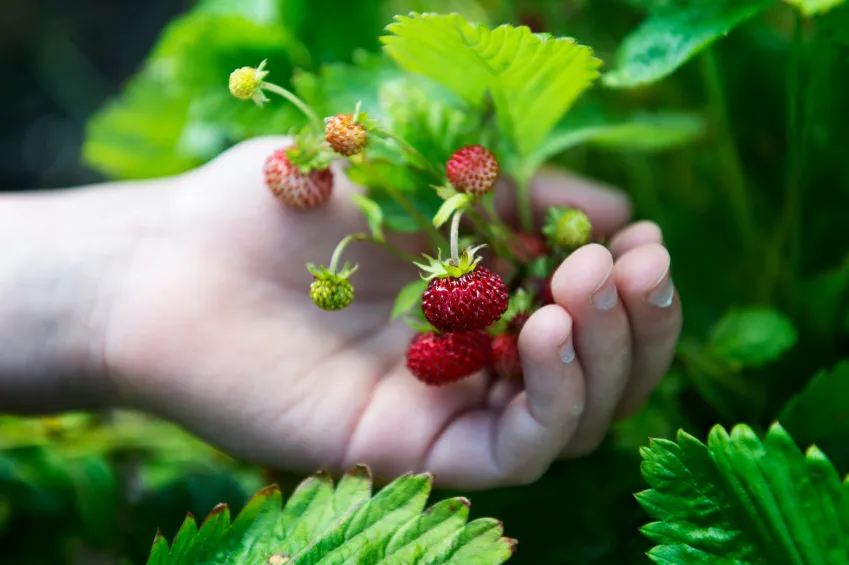
Bilberry
This unassuming little fruit goes by a variety of names depending on where you are from in Britain – some know it as a bilberry or blueberry, and others as a whortleberry, wild blueberry or whinberry. By September, the low-lying bilberry shrub, often found on moorlands, heaths, and in birch, oak and conifer woodlands, will be ripe with berries – assuming the sheep haven't got to them first. It's a slow harvest, but once picked there are lots of great options for delicious recipes. It is sold as a natural remedy for poor eyesight, as its anthocyanosides are thought to help protect the retina. Mainly, it's a tasty little berry.
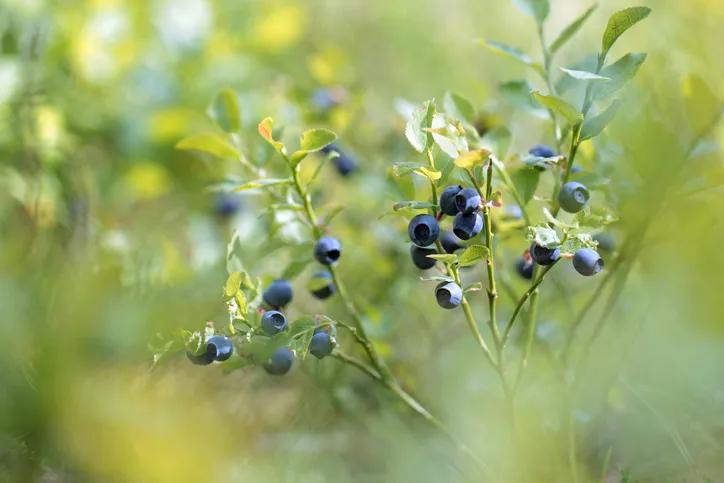
Edible nuts: ID guide
The arrival of September marks the beginning of nut season – learn to recognise five of the most common with expert forager Adele Nozedar.
Hazelnut
These nuts are ripe for picking when the leaves are just beginning to turn yellow. Often found in woods, hedgerows and scrubland, try giving a branch a good shake and searching below the tree. The leaves are roundish, downy and toothed while the nuts are encased in a green, leafy cup.
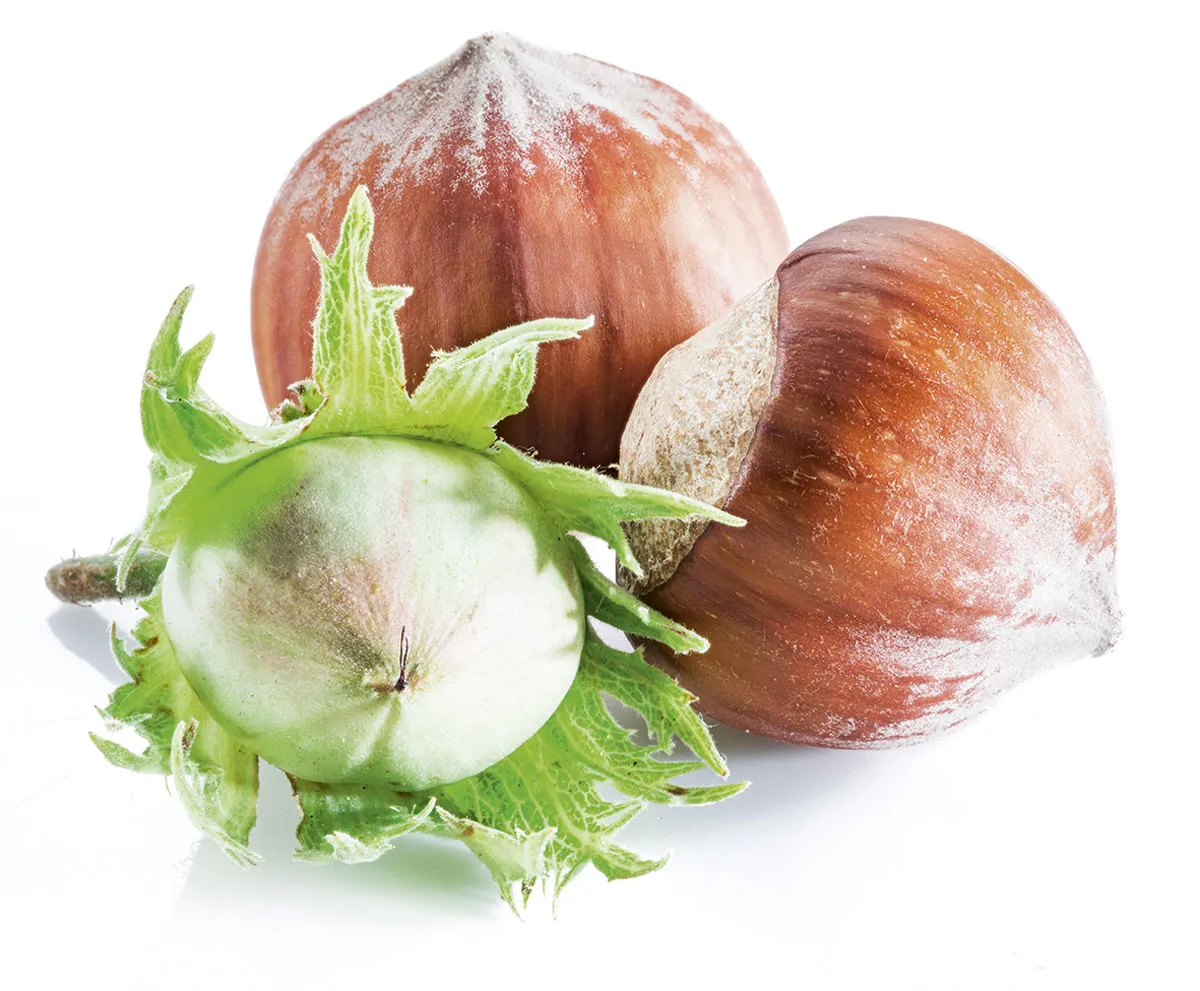
Sweet chestnut
The tree prefers a mild climate, lime-free soil and moisture. Unlike the conker (similar in appearance), the nuts are delicious. Pierce the skins, roast, peel and dip in butter and salt.
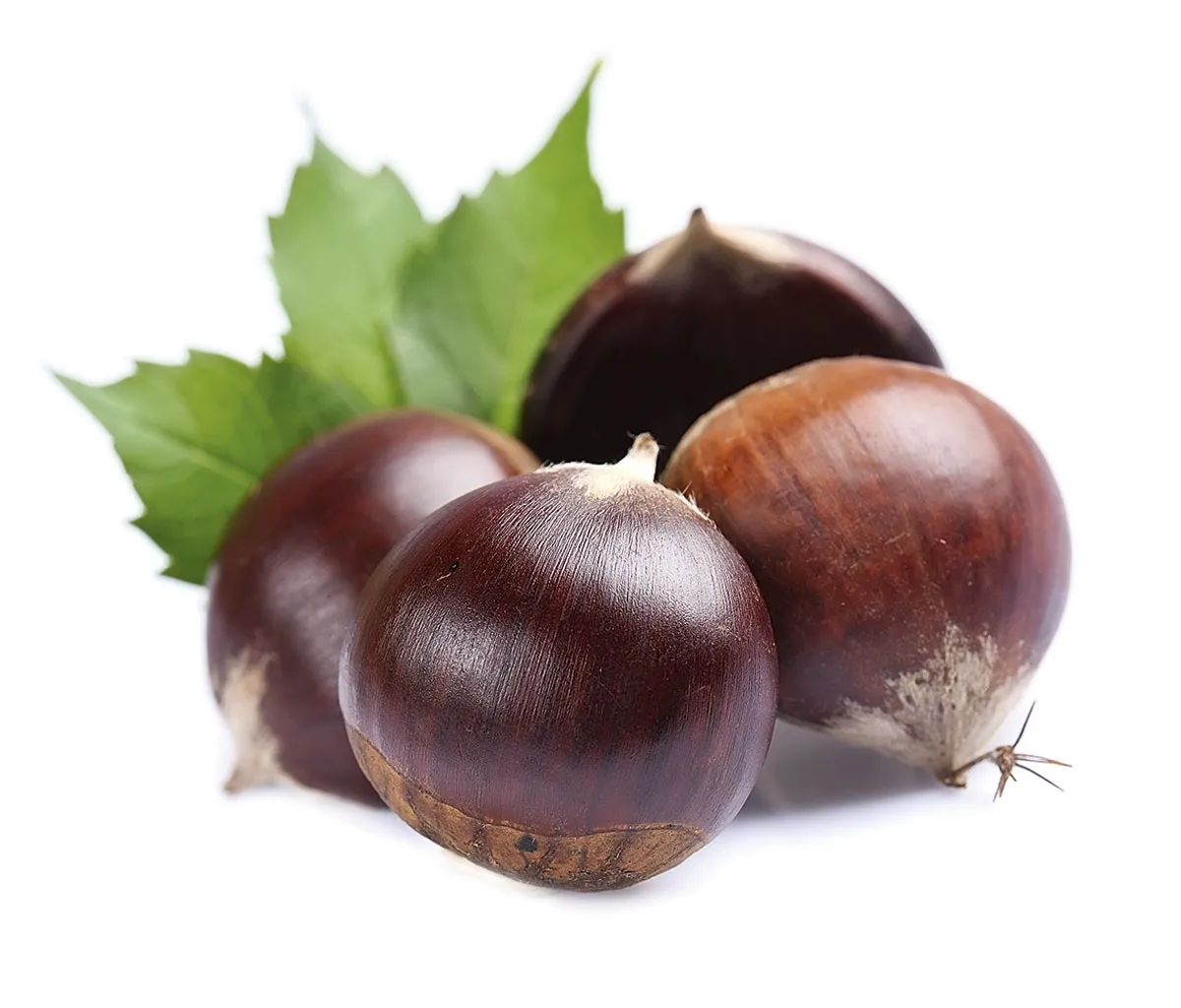
Not to be confused with: Horse chestnut
Underneath their spiky, green outer case, conkers are glossy brown, round, up to 4cm in diameter and have a paler patch on the underside. They are not edible, but make a lovely silky soap.
[image id="2106" size="landscape_thumbnail" align="none" title="GettyImages-526055333-4a9b58b" alt="GettyImages-526055333-4a9b58b" classes=""]Conker season is coming!/Credit: Getty
Acorn
Also known as the oaknut, acorn species vary in shape and size. Oak trees grow in woods as well as singly or in small groups. All acorns are edible, although tannins make most bitter. Roast them whole in their shells, leave to cool and then shell them. Eat as they are or grind them up into a hot drink that's a little like coffee.
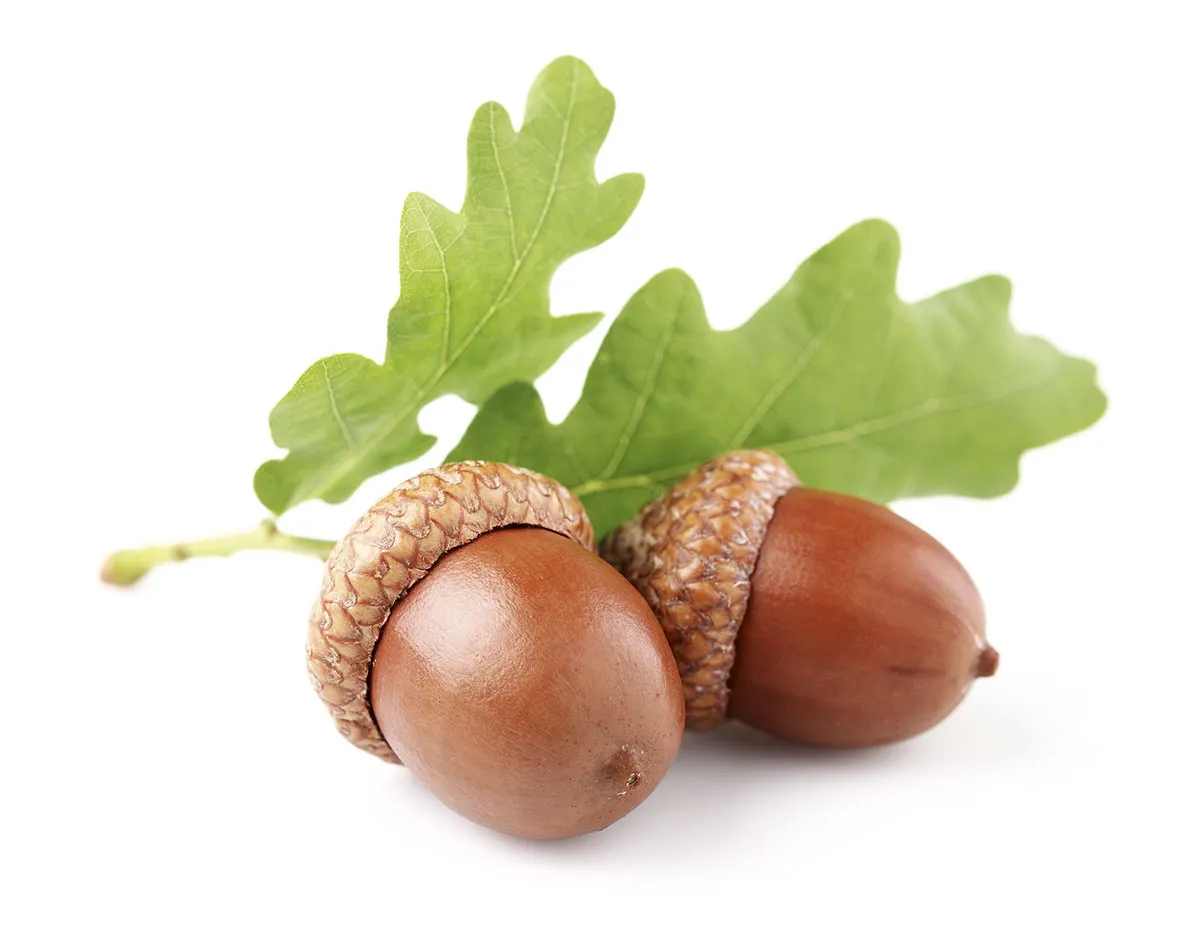
Walnut
These non-native nuts are something of a Russian Doll; a smooth, pale-green outer layer covers a further, knobbly shell that gradually hardens. The inner nut resembles two halves of a brain.
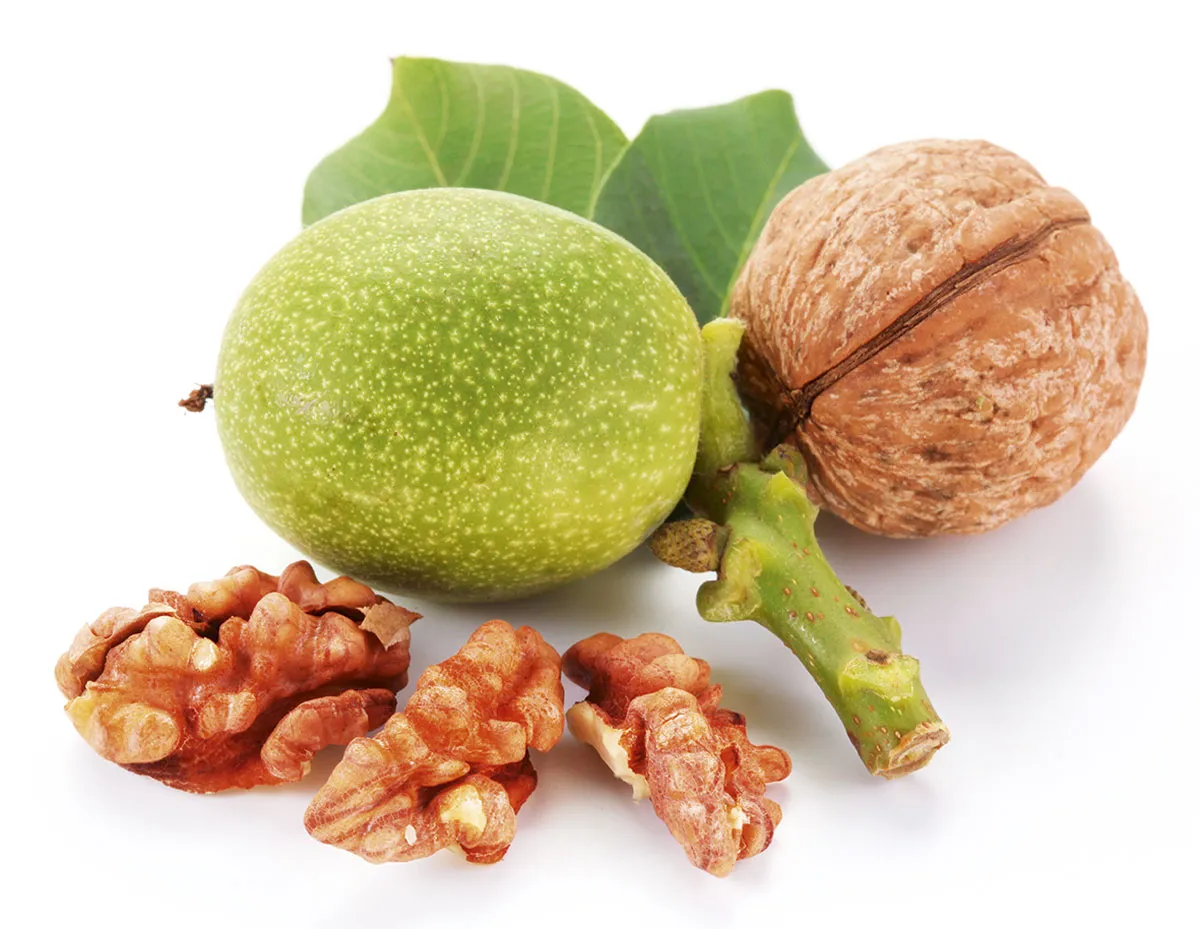
Beech nut
Beech trees grow alone and in forests. This easily recognisable tree can grow up to 40m (131ft) tall. The tight, prickly shells open in early autumn, dropping their fruits to the ground. The nuts – also known as beech masts – were once fed to pigs. The leaves are bright green, alternate and oval. The nuts grow with four, three-sided nuts to one brown prickly husk. It tastes similar to a walnut, but gather early, as you will have squirrels to contend with.

Edible seeds: ID guide
Poppy
Contrary to popular belief, poppies in England do not contain opium. The seedheads are ready for picking when they are a grey-brown colour and have small holes just underneath the flat top. Put the whole seed heads into a paper bag and shake. Remove the heads; the seeds left in the bag can be used for sprinkling on bread, cakes and rolls.

Nettle seeds
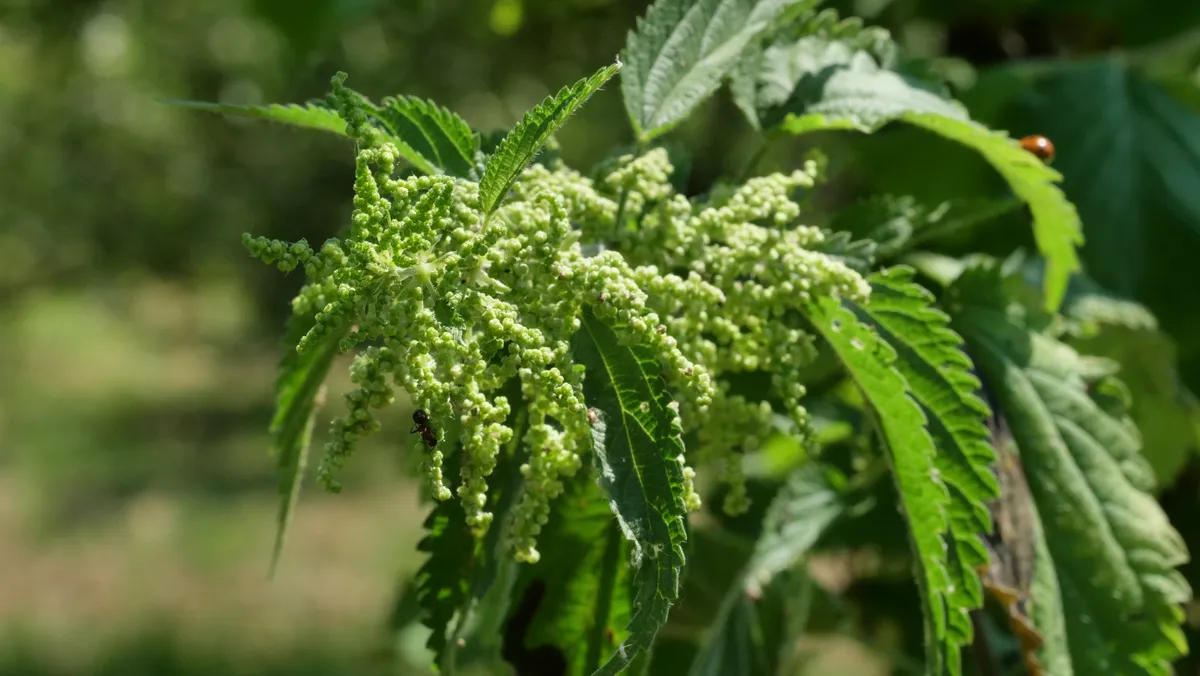
Considered a mild stimulant due to their circulatory boosting properties, stinging nettle seeds can be gathered, hung upside to dry (or dried in a dehydrator) and then used as a sprinkle for salads, soups and porridge. Only the female plant produces them, in green bunches. Leave the dark or brown seeds for the birds.
Main image credit: A branch of ripe Blackthorn or Sloe, Prunus spinosa, growing in the wild in the UK./Credit: Sandra Standbridge/Getty Images.



